
loading
In 2016, Embraer participated in the Farnborough International Airshow, a global tradition in the airspace sector that is held in London. For the first time, the company had each of its three business units featuring a new product: the latest generation E190-E2 commercial jet (see Executive Aviation), the KC-390 multi-mission military freighter (see Defense & Security) and the Legacy 500 executive jet (see Executive Aviation). These products demonstrate a commitment to cutting-edge innovation and technology, as well as continual portfolio modernization.
In Commercial Aviation’s Customer Satisfaction Survey (CSS), the Index of Spontaneous General Satisfaction (ISGE, in Portuguese) reached 84.9% and the Embraer Absolute Favorability (EAF) index reached 83%, preserving an improvement trend over the last seven years and positioning the company in second place among all sector manufacturers. All survey topics for 2016 showed an increase in the absolute favorability index. These results reflect a commitment to serve customers with excellence. In this regard, starting in 2017, the company will operate a business unit focused on customer support and services (see more information on the customer satisfaction survey results in GRI Indicators). G4-DMA Product and service labeling, G4-PR5
Embraer Commercial Aviation is a global leader in the manufacturing of jets with up to 130 seats. In 2016, the company celebrated the inaugural flight of the first prototype of the E190-E2 as well as its first international mission, which marked the beginning of the certification campaign. The delivery of the first aircraft is scheduled for 2018. Also, the campaigns for the E195-E2 and E175-E2 models are on track and their entry into service are scheduled for 2019 and 2021, respectively.
The second generation E-Jets have high performance engines that – together with new wings, fly-by-wire flight controls and advances in other systems – result in significant reductions of fuel consumption, maintenance costs, emissions and external noise. Since its launch, this product has won 275 firm orders and a total of 415 options, purchase rights and letters of intention. G4-EN7
Despite the schedule of new products in the upcoming years, sales performance for the first generation of E-Jets, mostly the E175 and E190 models, has been on par with previous years. This reflects customers’ preference for these aircraft and validates the decision to offer aircraft with 70 to 130 seats, within one family.
The business unit had a significant participation in the United States with the replacement cycle of the 50-seat fleet. On the other side of the globe, China is presenting opportunities stemming from new policies issued by the Civil Aviation Administration of China (CAAC). The largest country in East Asia has been strategic for Embraer, accounting for 80% of the region’s market share of the fleet of jets with less than 130 seats. Africa also presents a potential market, not only among the major airlines, but also with smaller operators that are migrating to E-Jets.

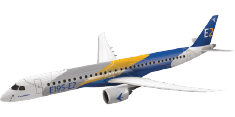 E195-E2
E195-E2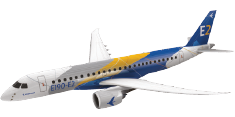 E190-E2
E190-E2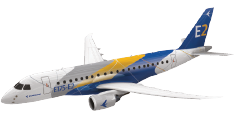 E175-E2
E175-E2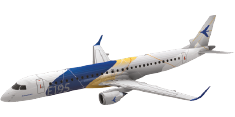 E195
E195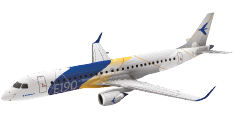 E190
E190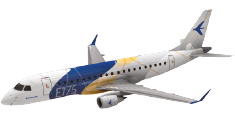 E175
E175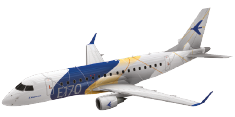 E170
E170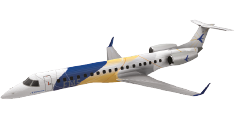 FAMILY ERJ 145
FAMILY ERJ 145In 2016, Embraer Aero Seating Technologies (EAST) began operations in Titusville, Florida, where it manufactures commercial and executive aircraft seats, including those for the first class of the E2. This represents an important step for the company’s verticalization strategy. This new unit’s products are characterized by quality, ergonomics, and the use of light materials.
 Services and support:
Services and support:
- Maintenance and repair of aircraft
- Revitalization of aircraft
- On-Site stocks (OSS)
- Field support
- Technical support
- Flight operations
- Training
- eSolutions
Learn more at
www.embraercommercialaviation.com/pt-br
In 2016, shortly after having completed 10 years of operations, Embraer Executive Aviation celebrated the delivery of its 1,000th jet, a Legacy 500. The model was also approved for operations at London City Airport, one of the most restrictive landing sites in the world.
This year was also marked by investments in the improvement of the Phenom 100 and Phenom 300 (the world’s best-selling business aircraft for the fourth consecutive year) and of the Legacy 450, Legacy 500 and Legacy 650E. The company also began the testing campaign for the Phenom 100EV (the new generation of the Phenom 100), which was presented at the main international event for executive aviation, the National Business Aviation Association (NBAA) Conference and Exhibition, in Orlando, Florida. The new product version introduces a superior avionics system and more powerful engines, with better performance in high temperatures and elevated altitude airports. The new jet is scheduled to enter the market during the first semester of 2017.
Further globalizing the business unit and to be closer to customers, Embraer has transferred part of the final assembly of the Legacy 450 and Legacy 500 jets to Melbourne, Florida, where the Phenom 100 and Phenom 300 models are already being produced. G4-13
Throughout the year, sales channels were also opened with representatives in Mexico, Chile, Japan, and in Europe. In addition to enhancing Embraer’s global presence, the initiative aims to develop a global brand that comprehends the culture and the uniqueness of buyers in the countries where relationships are established.
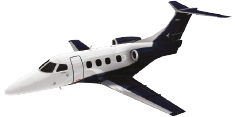 Phenom 100
Phenom 100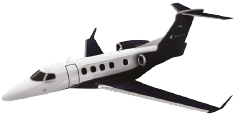 Phenom 300
Phenom 300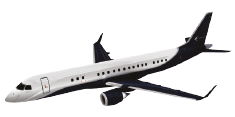 Lineage 1000E
Lineage 1000E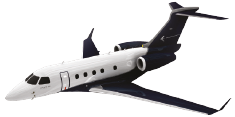 Legacy 450
Legacy 450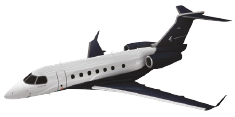 Legacy 500
Legacy 500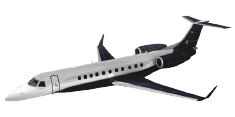 Legacy 650E
Legacy 650EIn 2016, Embraer delivered two Phenom 100E to Etihad Flight College, an integral subsidiary of Etihad Airways, the national airline of the United Arab Emirates. The contract provides for the delivery of two more jets of the same model at the beginning of 2017. The aircraft will be used in the pilot training academy, created to support the rapid growth of the airline’s fleet.
The Phenom 100E will also be used to train pilots in the United Kingdom’s armed forces. The contract signed with Affinity Flight Training Services provides for the acquisition of five aircraft for the Military Flight Training System (MFTS) program of the United Kingdom’s Ministry of Defense. The aircraft model is already being used at flight schools in the United States, Finland and Australia.
 Services and support:
Services and support:
- Maintenance and repair of aircraft (Embraer Executive Care – EEC)
- Aircraft refurbishment
- On-Site Stocks (OSS)
- Performance software
- Reduced Vertical Separation Minimum (RVSM)
- Integrated diagnostic solution (Aircraft Health Analysis and Diagnosis – AHEAD)
Learn more at
www.embraerexecutivejets.com
Embraer Defense & Security plays a strategic role in the Brazilian defense system and is the segment leader in Latin America. Additionally, it is present in over 60 countries. The A-29 Super Tucano turboprop, for instance, was the business unit’s best-selling model for the year and already serves 13 air forces in tactical support missions, counterinsurgency operations, advanced training and surveillance.
Participation in the global market will intensify in the coming years with the launch of the KC-390, a multi-mission aircraft that sets new standards in the category. In addition to delivering more performance and efficiency (with jet propulsion and reduced operating costs), the new freighter is capable of performing various missions such as transporting and launching troops and cargo, humanitarian aid, in-flight refueling, rescue missions and wildfire suppression. In 2016, the aircraft completed major milestones of its flight test campaign and toured eight countries, traveling more than 16,300 nautical miles (nearly 30,200 kilometers), and in 23 days off base, it demonstrated 100% availability. Embraer expects to receive the Initial Operational Capability (IOC) declaration by the end of 2017 and the Final Operational Clearance (FOC) in 2018. The first deliveries will also occur in 2018.
In recent years, Defense & Security has invested continuously in portfolio diversification with air traffic control products and radars operating under the most challenging climatic and topographic conditions, in addition to integrated border protection systems. During the year, the process of consolidating the operations of Savis Tecnologias e Sistemas S.A. and Bradar Indústria S.A. started. The companies are engaged in the development and production of radars, as well as border monitoring for remote sensing and protection of strategic structures. Both compose the Tepro Consortium, in charge of implementing the Integrated Border Monitoring System (Sisfron, in Portuguese) in Brazil. Sisfron comprises a border area of 800 km in the state of Mato Grosso do Sul. By 2016, 70% of the project had already been executed.
Visiona Tecnologia Espacial is a joint venture formed between Embraer and Telebras with the objective of acting in the integration of the system of Strategic Defense and Communications Geostationary Satellite (SGDC, in Portuguese) of the Brazilian Government. Scheduled to be launched at French Guiana in the first semester of 2017, the SGDC aims to meet the country’s satellite communications needs, including the National Program (PNBL) and a broad spectrum of strategies.
The Gripen Design Development Network (GDDN) in Gavião Peixoto, Brazil, also began operations this year, established for the development of the Gripen NG in Brazil, in partnership with the Swedish company SAAB. Embraer Defense & Security and SAAB will conduct the full development of the two-seat version of the fighter. Between 2019 and 2024, 36 Gripen NG fighters will be delivered to the Brazilian Air Force (FAB, in Portuguese). G4-13
In the coming years, the unit will maintain investments in these projects in order to grow sales volume and customer base, increase financial results, portfolio diversity, and expansion of international presence.
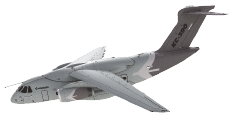 KC-390
KC-390
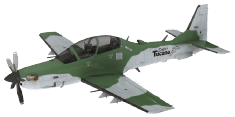 A-29
A-29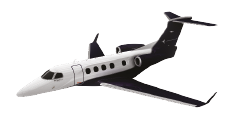 SPECIAL
SPECIAL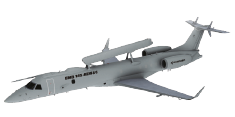 INTELLIGENCE,
INTELLIGENCE,In 2016, Rio de Janeiro hosted the Olympic and Paralympic Games, and nearly 2.5 million people passed through Tom Jobim International Airport. Embraer Defense & Security companies – Atech, Visiona Tecnologia Espacial, Savis and Bradar – worked in partnership with the Brazilian Government and contributed to the above-average safety compliance indices, as measured by the Ministry of Transportation.
Atech – which incorporated the activities of Embraer Systems in 2016 – offered the Integrated Air Traffic Management System (SIGMA, in Portuguese), which provides airspace usage planning, and the Advanced Air Traffic Information Management System and Reports of Operational Interest (SAGITARIO, in Portuguese), which simplifies airspace management, previously planned with SIGMA.
Visiona, in partnership with five other companies, carried out a monitoring pilot project by capturing high and very high resolution images, even under adverse climatic conditions.
During the football matches held in Brasília, the nation’s capital, with the support of Savis and Bradar, the army relied on a 4G/LTE (700MHz) mobile broadband network with a more reliable connection, without oscillations or interference. In Rio de Janeiro, the company also made available the Airborne Monitoring Sensor Based on Radio-Frequency Emission (SABER M60, in Portuguese), which assisted the Brazilian Aerospace Defense System (SISDABRA, in Portuguese) in protecting the Games’ governmental and sports facilities.
 Services and support:
Services and support:
- Maintenance and repair of aircraft
- Modernization of aircraft
- Unmanned aerial vehicles
- Training and Operation Support System (TOSS)
- Security systems/C4I (command, control, communication, computing and intelligence)
- Air traffic control systems
- Remote sensing
- Aerial surveillance radar
- Satellites
- Development and integration of complex systems for segments other than aviation and defense
Learn more at
www.embraerds.com
Embraer’s Ipanema aircraft is the leader in the Brazilian agricultural aviation market, with 75% market share and more than 1,300 units sold. The product has been manufactured for 50 years, without interruption, focusing on market trends and customer needs.
This is the world’s first airplane to be certified to fly with 100% ethanol for fuel.
Learn more at www.embraeragricola.com.br
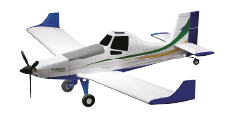
Being at the forefront of technology is a fundamental condition for Embraer, whose strategy is based on continuous learning and the ability to innovate.
The manufacturing plants house engineering and product development teams – the largest of which is in São José dos Campos, Brazil, which concentrates more than 4,000 professionals in these activities, 240 of whom are in pre-competitive R&D. In addition, the company maintains three engineering and technology centers: in Belo Horizonte (MG, Brazil), Melbourne (Florida, USA) and in the District of Évora (Portugal).
Embraer protects the intellectual property generated by its research and development investments. Throughout the year, considering the portfolios of invention patents and industrial design, the company filed 609 patent applications and had 314 patents granted.
The company also allocates resources for innovation through the Aerospace Participation Investment Fund (FIP, in Portuguese), created in 2014 with the Brazilian Development Bank (BNDES, in Portuguese), the Funding Authority for Studies and Projects (FINEP, in Portuguese), and the State of São Paulo development agency Desenvolve SP. In 2016, investments were made in five companies in the space, defense and cyber security segments, for which R$44.27 million were allocated.
Incremental innovation, in addition to occurring vigorously within P3E (see Comittment to excellence), is stimulated among employees by the Good Idea and the Innova programs. Good Idea is a program of suggestions for the development of routine activities with more efficiency. Throughout its history, the program has received contributions from 13,000 people and, in 2016, recorded 11,650 implementations of initiatives.
The Innova Program stimulates the culture of innovation and provides spaces for the consolidation of ideas. The main initiative today is Green Light, which brings a startup environment into the company by offering financial support and up to 100% paid time off for employees to develop their projects. This year, 28 projects were awarded funding for 76 people. Innova underwent a review and, starting in 2017, the program also assumes the role of catalyzing exponential technologies and identifying disruptive opportunities for the business. With this goal, the company will begin immersion into the innovation hubs of the Silicon Valley and of Boston, USA.
In addition to these initiatives, employees also meet annually for the Embraer Seminar on Technology and Innovation (SETI, in Portuguese), a conference that presents the main technological advances being developed, which can be strengthened through integration of the different departments of the company.
Regarding product sustainability, the program for the Integrated Development of Environmentally Sustainable Products (DIPAS, in Portuguese), coordinated by the Engineering department, leads studies and actions to insert Design for Environment (DfE) strategies into the company. Through this initiative, the use of restricted material is managed with consideration for current and future environmental legislation, technological alternatives to these materials are developed, and studies are conducted with respect to the product life cycle. There is also extensive interaction with the departments responsible for the creation of technologies aimed at reducing fuel consumption, carbon dioxide (CO2) emissions, noise, maintenance costs, and increasing operational efficiency, as well as pilot and passenger comfort. Since the aircraft’s operation is the longest stage in its life cycle, exceeding 15 years of activity, reducing fuel consumption and, consequently, energy, has a direct impact on the product’s environmental performance. Additionally, fuel costs are the main expense in aircraft operation, which is why manufacturers are always seeking design options that promote efficiency, thereby meeting both environmental and market requirements. G4-DMA Products and services, G4-EN7, G4-EN27
In 2016, Embraer and Boeing conducted tests on an E170 aircraft, which received a series of technologies to reduce environmental impact and increase aircraft efficiency and performance, such as a system for measuring air data; special paint to lessen the accumulation of ice and insects; aerodynamic modifications to reduce noise on takeoff and landing; and a bio-fuel blend, produced in Brazil, with 10% bio-kerosene and 90% fossil kerosene. This initiative is part of the partnership between these companies in the context of the Boeing eco-Demonstrator program, which, without precedent, unites the efforts of two of the world’s leading aircraft manufacturers for the benefit of the environment and of the aerospace industry.